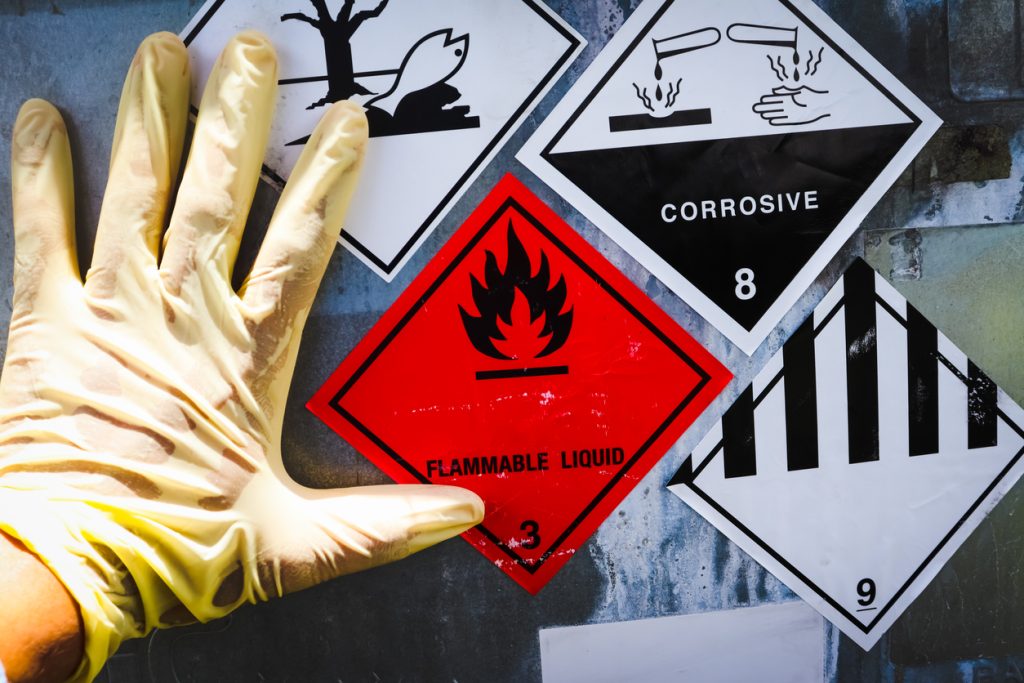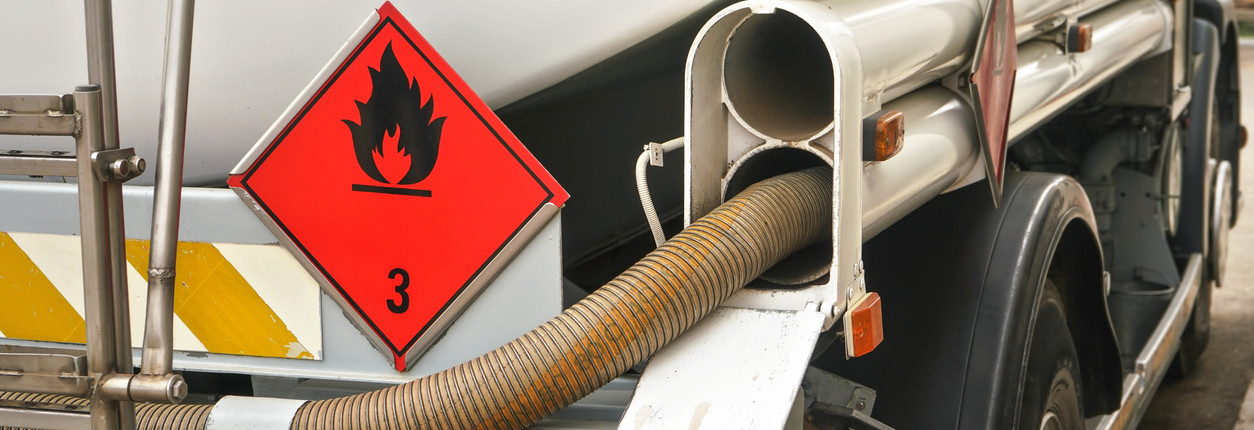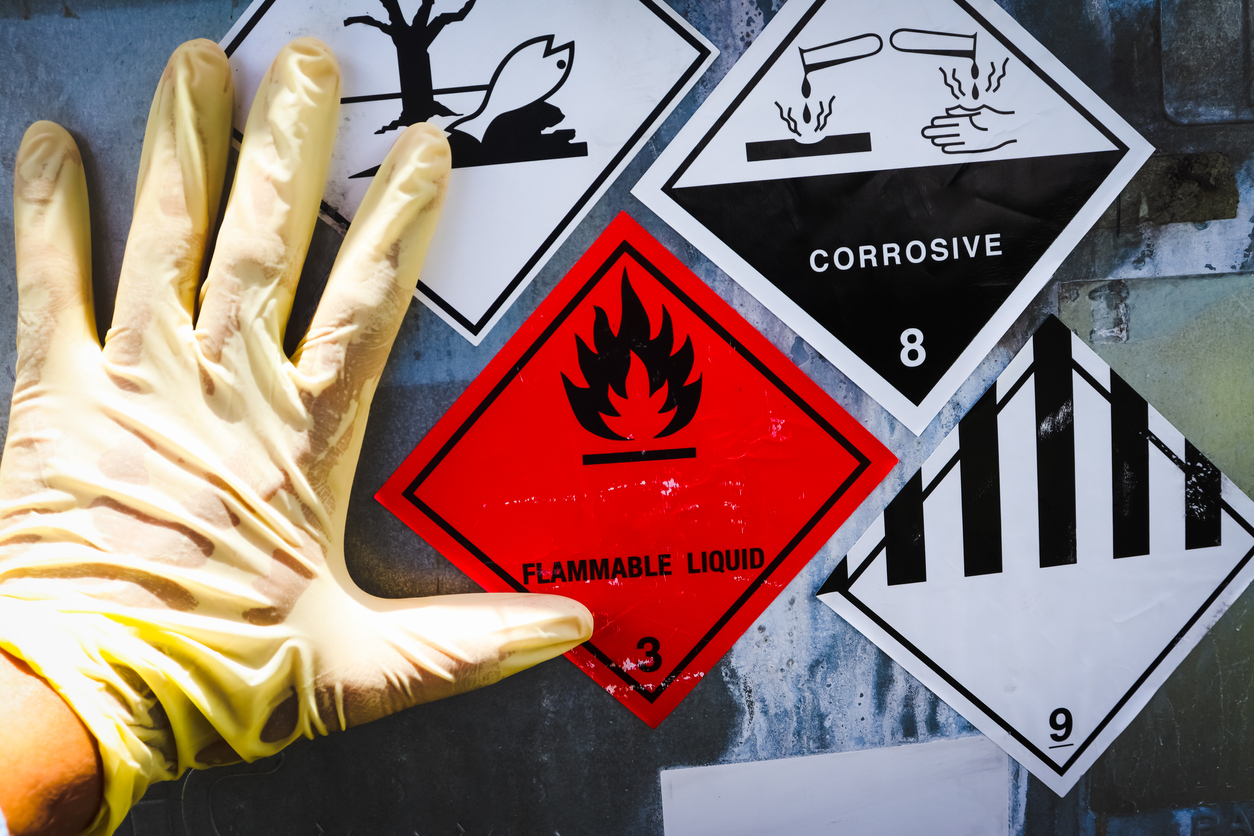It goes without saying that truck drivers are responsible for stocking the aisles of your favorite grocery stores and supermarkets. Truck drivers transport a lot more than food, clothes, and toilet paper, however. They transport everything. The most hazardous materials have to get from point A to point B somehow, and that dangerous job falls on the shoulder of truckers. The most common hazardous material transported isn’t anything fancy: It’s ordinary gasoline.
Gasoline and diesel fuel are both highly flammable, and they’re moved cross-country all the time. Fuel is far from the only dangerous material truck drivers have to handle. The following nine types of hazardous materials are routinely transported by trucking companies– And they need special precautions to do it without making an explosive appearance on the 6 o’clock news.
Class 1: Explosives
Explosives are the most obvious type of hazardous material truckers have to deal with. This cargo includes everything from dynamite, hand grenades, and commercial-grade fireworks to sparklers and model rocket motors. Every vehicle used for transporting explosive materials must be in good mechanical condition. That one’s a no-brainer, but the vehicle also needs to have tight floors made of non-spark-producing materials. Potentially spark-producing metal surfaces must be covered to prevent the possibility of detonating the cargo. Electric detonators can’t be moved in any vehicle equipped with a radio transmitter due to the risk of accidental detonation.
Class 2: Gases
Helium doesn’t get to Party City by itself. There are three categories of hazardous gases, including flammable gas, non-flammable compressed gas, and poisonous gas. All are dangerous for different reasons. Flammable gas, such as that found in spray paint and lighters, can cause fast-spreading fires. Compressed gas can explode if handled roughly or exposed to heat. Poisonous gases, like chlorine, can cause trouble breathing, skin damage, blurred vision, and nausea to those exposed. The closer you are to a spilled hazardous material, the more severe of a health risk you’ll face. In other words, truck drivers are among the most likely to be injured on the job by hazardous materials. We don’t know of any desk jobs that put employees at risk of chemical burns, do you?
Class 3: Flammable liquids
Lighter fluid isn’t the only flammable liquid drivers have to tote. Most perfumes, paint, and any other alcohol-based fluid can catch on fire if exposed to a spark. Gasoline is also highly flammable, and truck drivers move that particular hazardous material all the time.
Class 4: Flammable solids are less common hazardous materials
Just because they’re less common doesn’t mean they’re not potentially harmful. It’s hard to say whether flammable liquids or solids are more dangerous to transport. We’d prefer not to have to choose. Match sticks don’t seem too risky, but some classes of flammable solids behave less predictably. Some materials can ignite when wet, like barium and lithium. Others can spontaneously combust. Don’t throw oily rags from your latest shop project into the bed of your pickup, because it’s possible for them to catch fire without warning.
Class 5: Oxidizing substances and organic peroxides
Never heard of this one? We don’t blame you. No one really looks at the labels on the back of products like hydrogen peroxide, which is an oxidizer that reacts readily with most organic materials. Certain fertilizers are also flammable, as are all accelerants.
Class 6: Poisonous, toxic, and infectious substances
Would you ever think of nicotine as a hazardous material? According to the Department of Transportation, it is, along with arsenic, chloroform, lead, mercury, and everything else you’d strongly prefer not to ingest. While this class is less intimidating than explosives, toxic substances can still cause skin damage if drivers have to contain spills sustained during transport.
Class 7: Radioactive material
Truck drivers don’t have to be moving a nuclear weapon to be exposed to radioactive material. Even exit signs on roads contain nuclear fuels, usually tritium. This allows the sign to remain lit if the electricity in the area goes out, but it’s still dangerous to transport.
Class 8: Corrosives also count as hazardous materials
There’s a reason we’re strongly advised not to throw out old batteries and electronics. Most types of batteries contain corrosive acids. If the materials found in lead acid batteries or degreasing products are spilled during transport, it’s possible for them to burn a hole straight through the bed of the truck.
Class 9: Miscellaneous hazardous materials
Some hazardous materials don’t fit neatly into one of the classes above. The ones remaining get tossed into Class 9. Most of the miscellaneous dangerous goods transported by truck drivers are ordinary lithium batteries or other seemingly ordinary products, like airbag modules.
Anyone responsible for transporting hazardous materials needs hazmat training
Yes, that includes truck drivers. Anyone who participates in the transportation of hazardous materials, whether by ground, air, or ocean, needs to undergo a training program. While some training requirements seem like more of an inconvenience than anything else, hazmat training isn’t just for lawsuit prevention: It’s for disaster prevention.
An unprepared truck driver transporting a truckful of fireworks could launch a spontaneous, deadly celebration in the middle of rush hour. As for the rest of us, we’re just happy that the most dangerous thing we carry around is a pack of sparklers. Stay safe, folks, and remember to thank your truck drivers.









